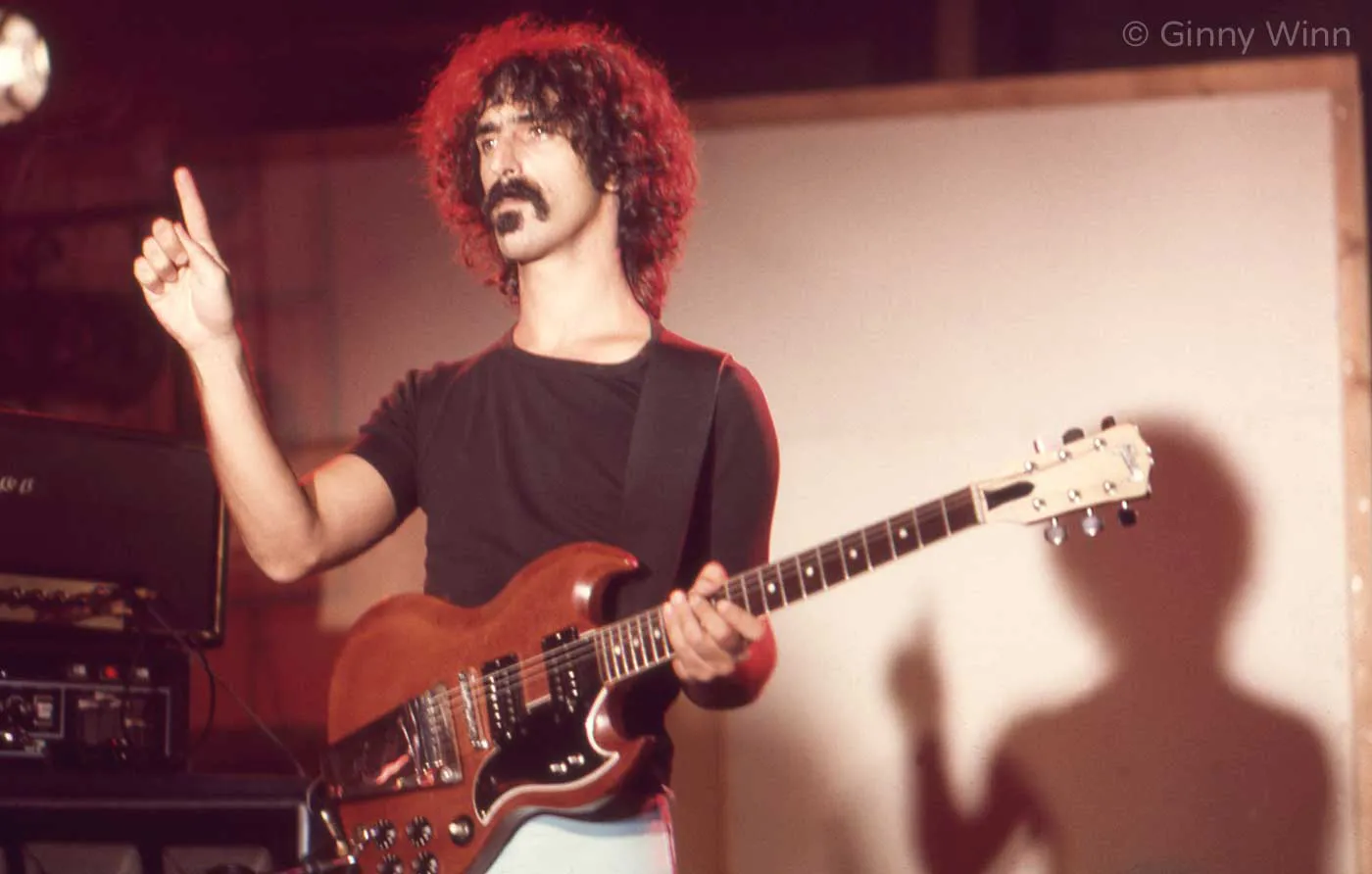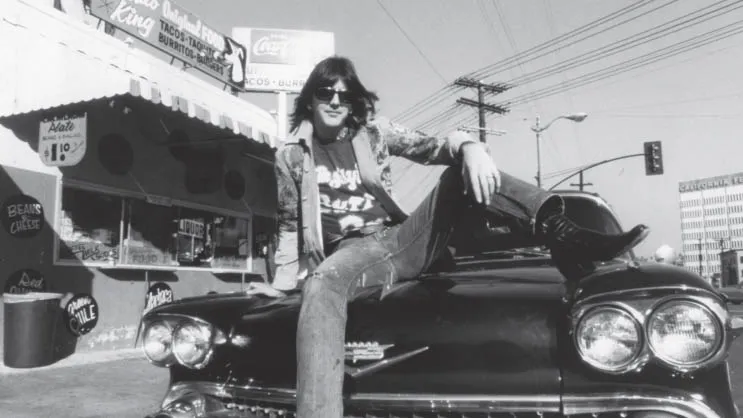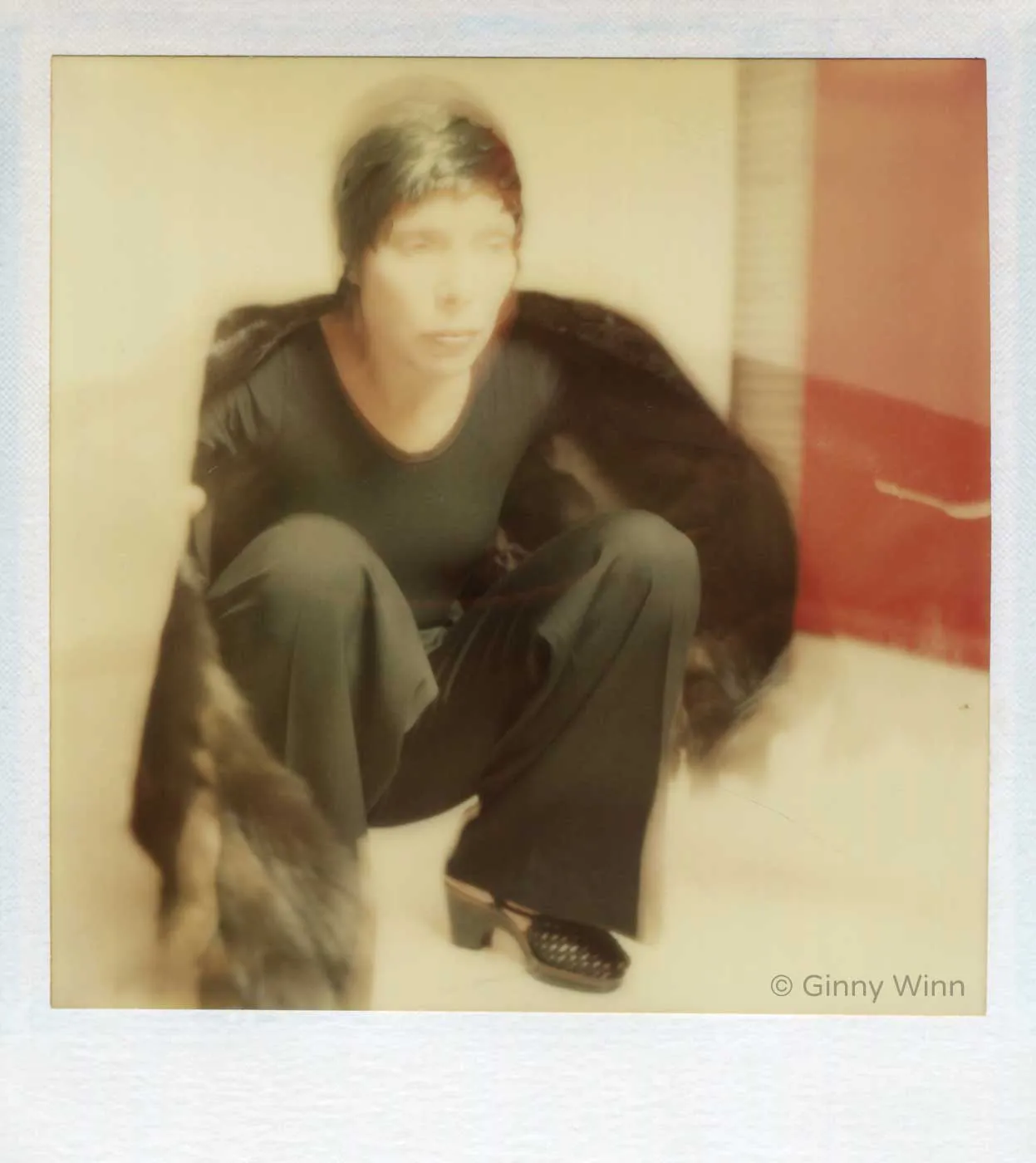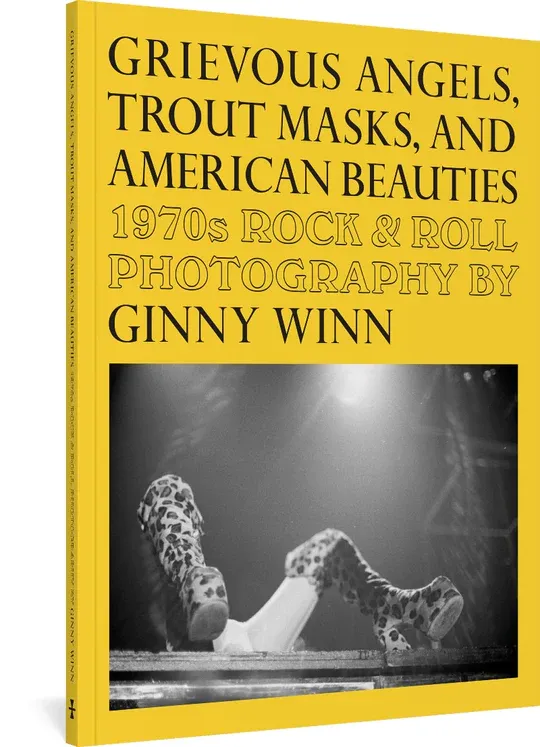Laurel Canyon was the cultural center of Southern California music in the 1970s, where Joni Mitchell, Bonnie Raitt, and Frank Zappa made their music. Ginny Winn photographed them and other up-and-coming artists. She was the first staff photographer for both Warner and Reprise Records, then eventually left the industry to become a therapist. But she recently unearthed her photo archive and published a book called Grievous Angels, Trout Masks, and American Beauties: 1970s Rock & Roll Photography of Ginny Winn.
Winn tells KCRW that when she shot concerts, no other women photographers were around, and she didn’t think much of that until hindsight. “I remember the first shoot was at the Hollywood Bowl, and I was in the pit. I got there way early and got in the middle. And then I just focused on getting the shot.”

Frank Zappa performs with his guitar. Photo by Ginny Winn.
During her career, Winn kindled a friendship with singer Maria Muldaur, known for her 1973 hit “Midnight at the Oasis.” The two met at a Warner Bros. party Winn was hired to shoot for: “She was sitting on a step in front of a calendar that had a girl with a fish coming out of the bikini. And because she was sitting there like that in front of the calendar, I thought it was a cute shot. But I didn't know she was Maria Muldaur.”
It turned out that the two lived down the street from one another in Laurel Canyon. Muldaur regularly came over to Winn’s house to do laundry, and that was where Winn shot photos of Muldaur for her albums. Eventually, they became best friends.
Winn also had the chance to visit Marin County to shoot Grateful Dead drummer Mickey Hart. That day, the musicians were passing around a bottle of acid.
“I'm at the Grateful Dead ranch. And we meet down by the horses in the morning. And one of them appears, I guess Mickey, with a [small glass bottle], and everybody takes a drop. And I just went with the flow, it seemed like the thing to do. And it turns out it's this pure, as-good-as-it-gets acid,” she recalls. “So this one word kept going through my mind. It's irrevocable. … And that day ended. We went … to Mickey's favorite Chinese restaurant … which was heaven, and then the Grateful Dead studio. Yeah, and I really was like, ‘This is as good as it gets.’”

“I just went with the flow. It seemed like the thing to do,” Ginny Winn says about shooting Mickey Hart and the Grateful Dead. Photo by Ginny Winn.
Another artist featured throughout the book is Gram Parsons, who pioneered the alternative country Americana genre. His song “The Return of the Grievous Angel” partly inspired Winn’s book title.
Parsons died at age 26 in 1973 from a drug overdose in Joshua Tree.
“I'm just so sad that he didn't live longer. His voice was so special. And I felt like he and I had a very out-of-time, innocent child-to-child, heart-to-heart connection,” Winn shares.

Ginny Winn says she had a “heart-to-heart connection” with Gram Parsons. Photo by Ginny Winn.
In her 40s, Winn decided to pivot and become a therapist. At the time, she was working as a bartender and was asked to take care of Keigh Lancaster, actor Burt Lancaster’s granddaughter, who experienced undiagnosed paranoid schizophrenia: “That was what made me think, ‘This is it. This is what I'm supposed to do for my life.’”
Thus, she went back to school, got her master’s degree, passed state licensing exams, and put in 3,000 training hours under supervision.
The skills she learned as a photographer helped her as a therapist, she explains.
As a therapist, she says, “You're sitting with someone, honoring them, wanting to make a connection, [being] respectful, getting to know each other, and helping them to be their best self.”
She continues, “And when you're shooting somebody, you want them to be their best self. … And you're also, in both cases, like namaste, honoring that in you, which is also in me. … I think that must be what comes through. And it's in the eyes, the eyes have it.”

Joni Mitchell appears in “Grievous Angels, Trout Masks, and American Beauties.” Photo by Ginny Winn.

The cover of Ginny Winn’s book shows Alice Cooper on stage with thigh-high leopard print boots. Credit: Fantagraphics.

